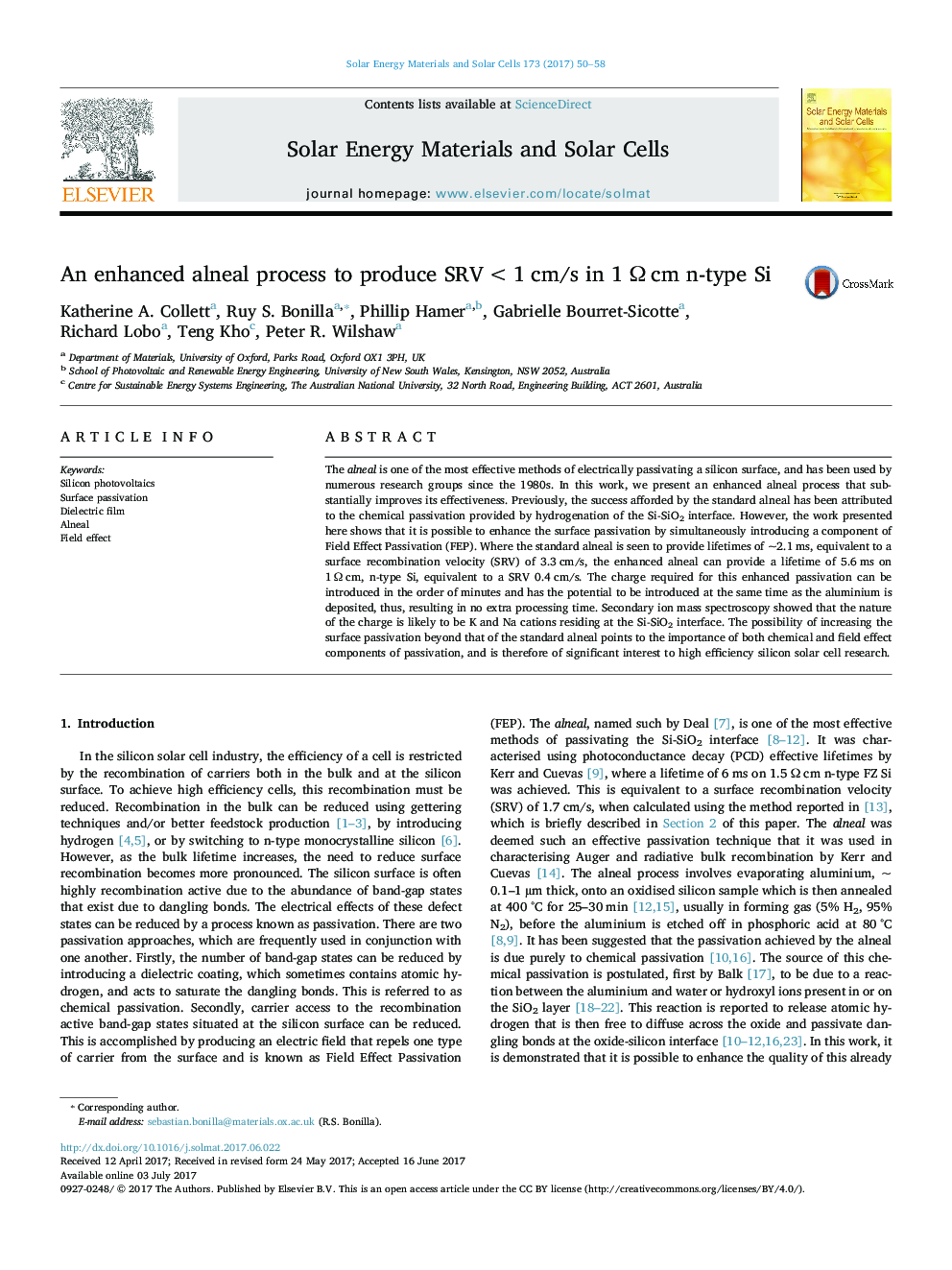| Article ID | Journal | Published Year | Pages | File Type |
|---|---|---|---|---|
| 6456779 | Solar Energy Materials and Solar Cells | 2017 | 9 Pages |
The alneal is one of the most effective methods of electrically passivating a silicon surface, and has been used by numerous research groups since the 1980s. In this work, we present an enhanced alneal process that substantially improves its effectiveness. Previously, the success afforded by the standard alneal has been attributed to the chemical passivation provided by hydrogenation of the Si-SiO2 interface. However, the work presented here shows that it is possible to enhance the surface passivation by simultaneously introducing a component of Field Effect Passivation (FEP). Where the standard alneal is seen to provide lifetimes of ~2.1 ms, equivalent to a surface recombination velocity (SRV) of 3.3 cm/s, the enhanced alneal can provide a lifetime of 5.6 ms on 1 Ω cm, n-type Si, equivalent to a SRV 0.4 cm/s. The charge required for this enhanced passivation can be introduced in the order of minutes and has the potential to be introduced at the same time as the aluminium is deposited, thus, resulting in no extra processing time. Secondary ion mass spectroscopy showed that the nature of the charge is likely to be K and Na cations residing at the Si-SiO2 interface. The possibility of increasing the surface passivation beyond that of the standard alneal points to the importance of both chemical and field effect components of passivation, and is therefore of significant interest to high efficiency silicon solar cell research.
